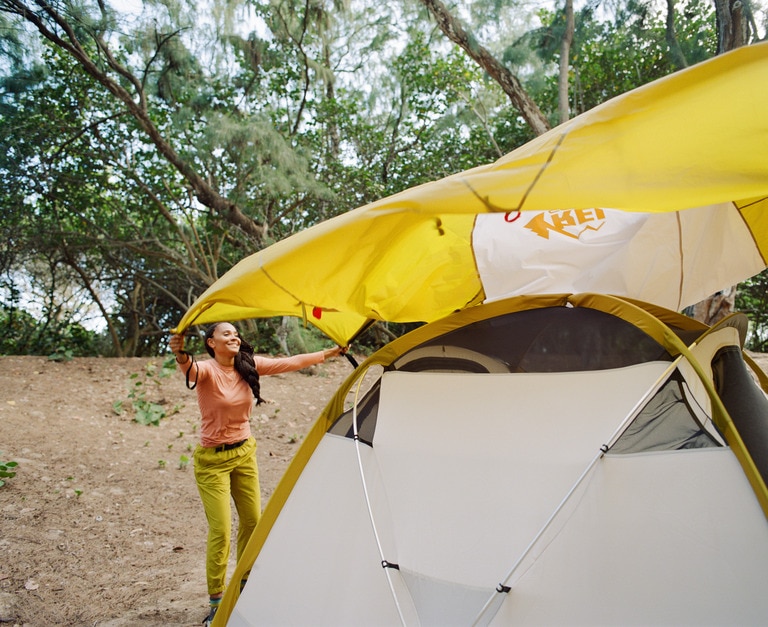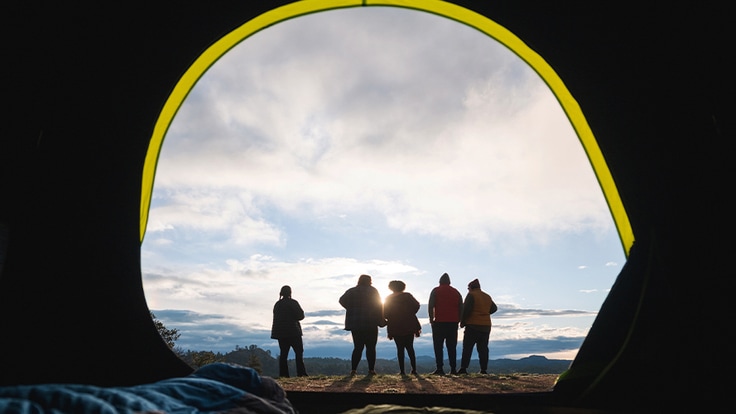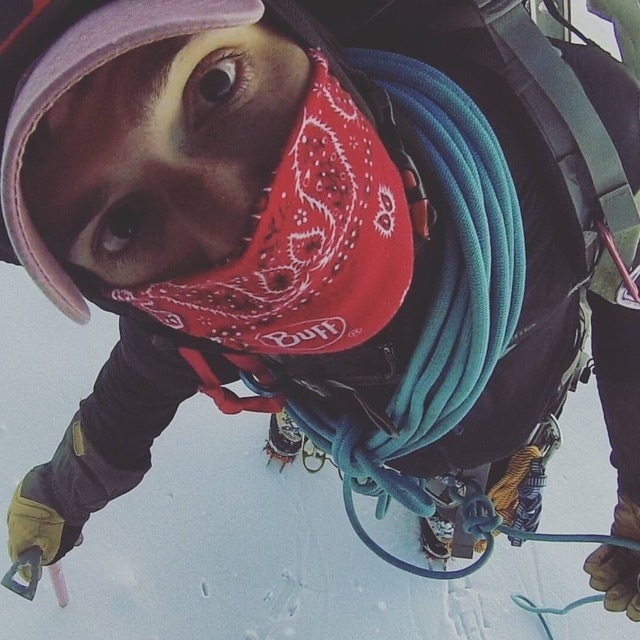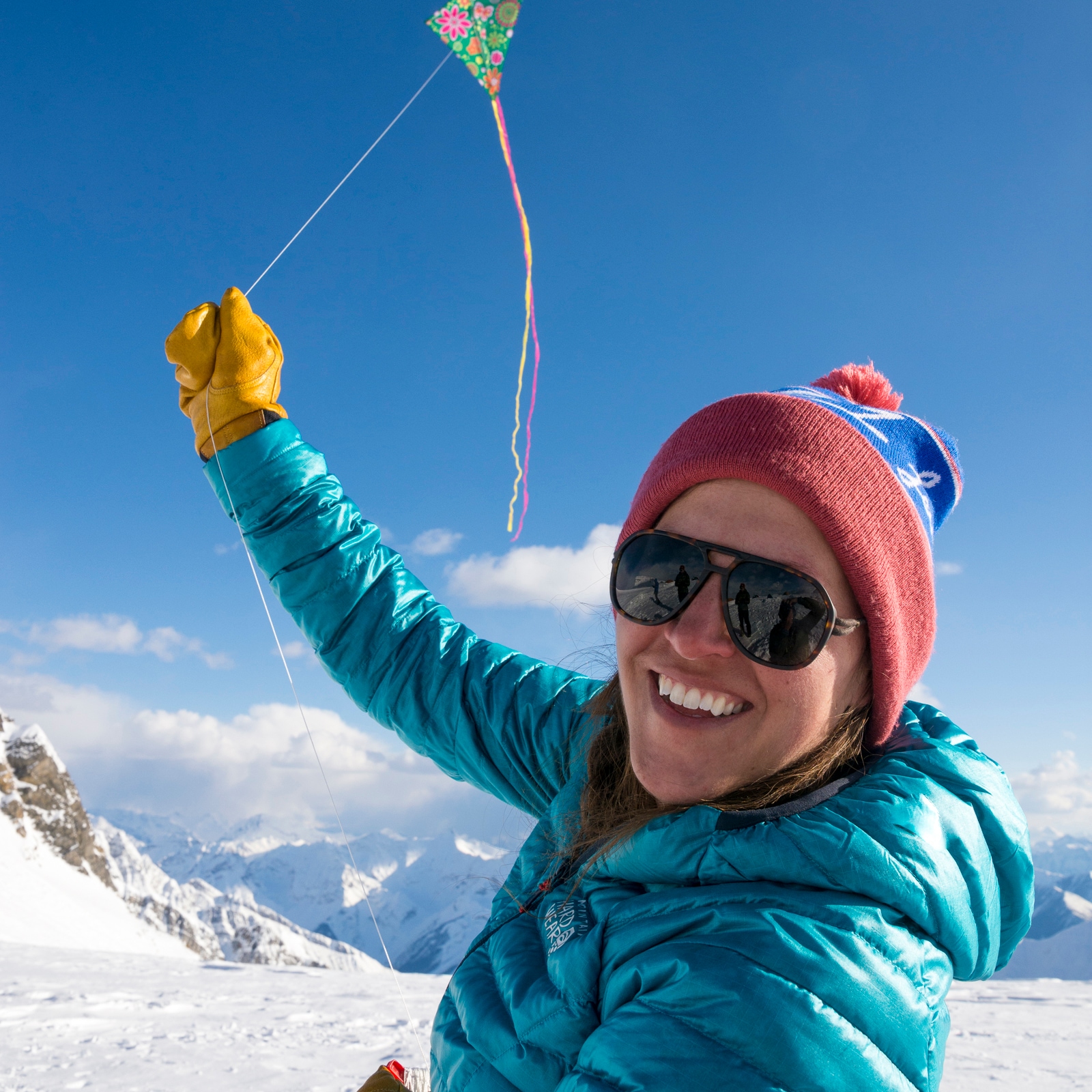Whether you’re a family car camper, an overlander or somewhere in between, settle in—the search for your next nylon abode begins here. This year’s crop of tents for car camping proves there’s a perfect home away from home for everyone who wants to venture outside.
Here’s the skinny: When you’re car camping, you don’t need to worry about the bulk or weight of your gear (more on this below). That means you can enjoy shelters that are roomier and more feature-packed than backpacking tents. Such shelters are also often easier to set up than their backpacking cousins, and more affordable, too. This can make sleeping outdoors a more enjoyable experience.
We tested the best tents you can find at REI and distilled all of that feedback into what you’ll find in this guide. So pack the car. Whether you’re gearing up for a camping trip with a large crew or planning an adventure for two, you’re sure to find the perfect car-camping tent right here.
Test Results
For quick recommendations, check out the results of our round-robin here, or scroll down for in-depth reviews.
- Best Camping Tent for Large Groups: REI Co-op Wonderland 6 Tent
- Best Camping Tent for Small Groups: REI Co-op Base Camp 4 Tent
Other Top Performers
Best Camping Tent for Large Groups & Editor’s Choice Award Winner
REI Co-op Wonderland 6 Tent
Score 95
Floor area 83.3 sq. ft.
Vestibule area None
Peak height 75 in.
Number of doors 2
Packaged weight 22 lbs. 15 oz.
One tester dubbed this palatial tent his "party house," and we couldn't agree more. Not only is the 78-inch peak one of the tallest in our test, but this behemoth serves up more than 83 square feet of space—bigger than some brick-and-mortar bedrooms. To that end, the REI Co-op Wonderland 6 comes with a divider, so campers can create two rooms in the rectangular floor plan, each with its own entrance. Testers had no problem fitting three sleepers on each side, but we highly recommend turning the front room into a lounge with chairs and a card table if you're not maxing out the capacity.
The tent doesn't feature any true vestibules, but awnings on each side provide plenty of room for staying out of the rain while you take your boots off. On clear days, you can roll them back to soak up some sun. And unless you're filling the Wonderland 6 to capacity, you'll have plenty of room inside the main area for storage: One tester said that filling the tent with a half-dozen felt a little snug, but any less than that afforded plenty of elbow room. If you need a true vestibule, go all out: Connect the Wonderland Mud Room ($125, sold separately) to give yourself a 56-square-foot foyer. "It's like our gear garage," says one tester. "At night, we move our chairs, side table, firewood and the kids' bikes inside. If it's raining, we'll even eat in there." The Wonderland 6 performed well in extended precipitation and wind when properly guyed out, and testers reported no leaking, even when it was pitched on the lawn when the sprinklers went off (all in the name of research). Another tester was also impressed with the tent's ventilation during sunny 90°F days camping at a Texas park. But note that a shelter this tall with near-vertical sidewalls won't be the best option in high winds. If you're planning to camp in more exposed terrain or extreme conditions, opt for a tent with a more aerodynamic profile.
Of course, luxury like this isn't compact. The Wonderland 6 packs down to a bundle the size of a toddler, though it still leaves plenty of room in your trunk for other gear. On the plus side, with a tent this big, you'll likely have plenty of companions helping out. Setup crews will appreciate the color-coded poles, clips and sleeves that simplify the pitching process.
Bottom Line: Enjoy maximum living space in the REI Co-op Wonderland 6, which has two rooms that can easily accommodate families and folks looking to spread out.
Testing Stats:
- Nights out: 69
- Testing states: Colorado, South Dakota, Texas, Utah and Washington
- Best testing story: "Google Maps is the key to good desert car camping," one tester says (yes, he's a millennial). "A little bit of scouring before this trip yielded some cool new ideas, but it wasn't until we drove almost directly to the edge of a 1,000-foot-deep canyon and set up with a view over the rim that we realized how clutch that prep was."
Best Camping Tent for Small Groups
REI Co-op Base Camp 4 Tent
Score 90
Floor area 59 square feet
Vestibule area 23 + 15.5 square feet
Peak height 63 inches
Number of doors 2 doors
Packaged weight 17 lbs. 5.6 oz.
Cramped quarters? Not with the Base Camp 4 from REI Co-op. This four-person shelter maximizes space with a deep awning (our New Mexico–based tester stationed a camp chair beneath it to wait out a squall) and a generous vehicle attachment (like a large vestibule; sold separately) that’s spacious enough for four camp chairs and a table.
All that, and it packs down to about the size of six Nalgene water bottles.
“No four-person tent is ever going to pack down small, but this packs down smaller than the [other] 4-person tent I have been using for years,” says the New Mexico–based tester.
Because more people typically means more gear, testers appreciate the shelter’s interior and roof pockets as well as hang loops that make organization a cinch. Additionally, four roof vents encourage air flow (a must when housing several stinky campers) and offer primo stargazing if you ditch the fly. Two wide-mouth doors on either side allow access without crawling over campmates and, if you’ve maxed the capacity, can make the tent feel a little less claustrophobic.
One caveat: Larger campers may feel squished. Peak height is a little less than 5 feet, 3 inches. Even so, one of our taller testers felt that the shelter’s superior weatherproofness made up for that: “I was prepared to not like this tent because it did not have standing headroom,” says the tester, who is 5 feet, 9 inches tall. “But, after using it through hot days and several violent, windy thunderstorms, I really came to like it.”
It's also worth noting that the Base Camp 4 doesn’t include a tent footprint. To extend your shelter’s life and make clean-up easier, you can purchase the matching footprint separately. “I needed to clean the bottom quite a bit and it's much more awkward to clean the bottom of a tent than just a footprint,” says our Minnesota-based tester. Buy here.
Bottom Line: With wide doors, roof vents, a deep awning and an optional vehicle attachment, the REI Co-op Base Camp 4 fits small groups comfortably.
Testing Stats:
- Nights out: 9
- Testing states: Minnesota and New Mexico
- Best testing story: “I loved being able to spread out and lounge with a book, listening to the rain and the birds. When there was a break in the weather, having the open roof vents was such a treat. I also love the side vents toward the bottom of the tent, which let Helen enjoy a little morning breeze. She's a senior cocker spaniel and she's fully blind, so she loves to be able to just sniff around outside; I loved watching her little head lift up when she caught an interesting scent waft in from the vents near her bed. And listen—if Helen's happy, I'm happy.”
Other Top Performers
Honorable Mention
Gazelle T4 Hub Tent
Score 87
Floor area 61 sq. ft.
Vestibule area None
Peak height 78 in.
Number of doors 2
Packaged weight 30 lbs.
"One minute," declares our editor. "That's how quick this thing goes up." Once you unroll the body, the T4 Hub from Gazelle pops up instantaneously. Stake it down, then you're done. If you're wondering why all tents aren't built like this, there are downsides—namely weight (30 pounds) and packed size (8.6 inches by 67.5 inches—not a typo). That means you need ample storage space when it's not in use, both in your home and vehicle. But, if you're set there, enjoy the easy-breezy pop-up design. The T4 Hub is also surprisingly sturdy in 20 mph winds, thanks to its weight, hefty poles and 210-denier polyester fabric. Inside, there is enough space for most people to stand up in, plus double doors and plenty of pockets and windows.
Honorable Mention
Kelty Discovery Basecamp 6 Tent
Score 79
Floor area 88 sq. ft.
Vestibule area None
Peak height 68 in.
Number of doors 1
Packaged weight 13 lbs. 14 oz.
A six-person tent for less than $200 is a bit of a unicorn, especially when that tent weighs less than 14 pounds. But that's exactly what you get with the Kelty Discovery Basecamp 6. Of course, at this price point you're bound to lose a few bells and whistles. This shelter is admittedly far simpler than the feature-rich Wonderland 6, but sometimes the basics are all you need for a night under the stars.
During a test in eastern Kansas, the tent comfortably fit a family of six and stood up to a nighttime shower. It shed the two inches of rain that fell during the night, and the dome shape handled wind better than other similar-size tents in this lineup. Plus, it was easy to set up, even with just one person on the job. One tester's biggest concern was the tent-door zipper that occasionally became stuck or snagged on the fabric—a problem he worried could worsen with use.

Buying Advice
Car-camping tents are generally larger, more spacious and more feature-packed than backpacking tents. They're also heavier. That would be a problem if you had to haul your setup everywhere—but that’s the beauty of car camping. When you drive to your campsite, weight isn’t an issue. The tents in this guide are roomy, feature-rich and affordable. They’re not the most portable, but there are some crossover tents that are light enough to backpack with and would still be incredibly comfortable in a front-country campground.
In order to select the best shelter for you, consider the following factors.
Capacity
Every tent model features a number in its name that corresponds, roughly, to how many people can fit inside, lying down shoulder to shoulder. There isn’t an industry standard for how much room each person gets, so think of it as a maximum; four sleepers can fit in a four-person tent, but you’ll be more comfortable in a six-person shelter.
Also take a look at tent specs before buying. The floor area can help you think about where the sleeping pads would be positioned to maximize space, and peak height can tell you how much headroom you’ll have.
Vestibules and Doors
The space inside the main body of the tent isn’t the only space that matters. Especially if you’re dealing with weather or otherwise spending extended time inside your tent, you’ll want to get extra stuff out of the thing. That’s where vestibules come in. These indoor-outdoor spaces on the other side of the door are covered and accessible from the inside of the tent, but don’t eat into the floor space. They’re great for storing extra gear and wet clothes.
If there are more than a couple of sleepers in your tent, having multiple doors is nice. It allows folks to enter and exit without stepping over one another or getting in anyone’s way.
Features
It’s also worth considering things like organization, ventilation and even color. Extra features tend to add cost to the shelter, but can be worth it. Interior pockets, gear lofts and gear loops let you get your sundries off the floor and out of the way, preserving floor space for sleeping. It’s nice to be able to designate one pocket for every sleeper, but not essential.
Being able to remove the rainfly completely in good weather can improve the feeling of being outside. If you have multiple people sleeping in a tent or are camping in rain or humidity, you might want the ability to open vents in the tent to increase airflow and minimize condensation.
A bright-colored tent may make the inside feel more comfortable and pleasant when it’s gray and murky outside. It’s also more visible from afar. A neutral-colored tent, on the other hand, will blend in with its surroundings more.
Methodology
Beginning in the summer and fall 2019, we’ve sent more than 20 members (and their friends, families and pups) from across the country out into car campgrounds and parcels of wide-open public land to evaluate the best shelters you can find at REI. They’ve dealt with blazing sunshine, unrelenting rain and gale-force winds, scrutinizing everything from leaks to privacy windows.
Ultimately, after each testing season every tester rates each shelter on its spaciousness, weather protection, durability, features, price and usability. We averaged those scores to give each tent a combined score out of 100; these tents are proven to provide the best night’s sleep. The REI Co-op Wonderland 6 and REI Co-op Base Camp 4 performed supremely well in most categories; the Gazelle T4 Hub and Kelty Discovery Basecamp 6 performed well in at least one—but not all—categories.


![Wonderland 6 Tent [3/4 front view with rainfly (Glen Green)]](/media/3c068469-8b7b-4dc5-a914-6480d07ccd9b/?size=440)

![Wonderland 6 Tent [Front view (Glen Green)]](/media/24de95da-680d-4e7f-a79a-30443e15059e/?size=440)

![Base Camp 4 Tent [3/4 front view with rainfly]](/media/d2f8eaa7-d562-4fd1-8f03-cbd763fd624a/?size=440)

![Base Camp 4 Tent [Front view]](/media/fc2f7391-abbe-48dc-bb8b-3693d0c25613/?size=440)

![Base Camp 4 Tent [Back view with rainfly on]](/media/e8b619e7-d195-46d2-854f-a2a3643e57f9/?size=440)
![T4 Hub Tent [3/4 front view with rainfly (Alpine Green)]](/media/c6f4348d-a30b-4f6c-a65b-468ad06a8cd8/?size=440)

![T4 Hub Tent [Front view (Alpine Green)]](/media/fa8afaee-7f81-49af-9dcf-b56febfc610d/?size=440)






